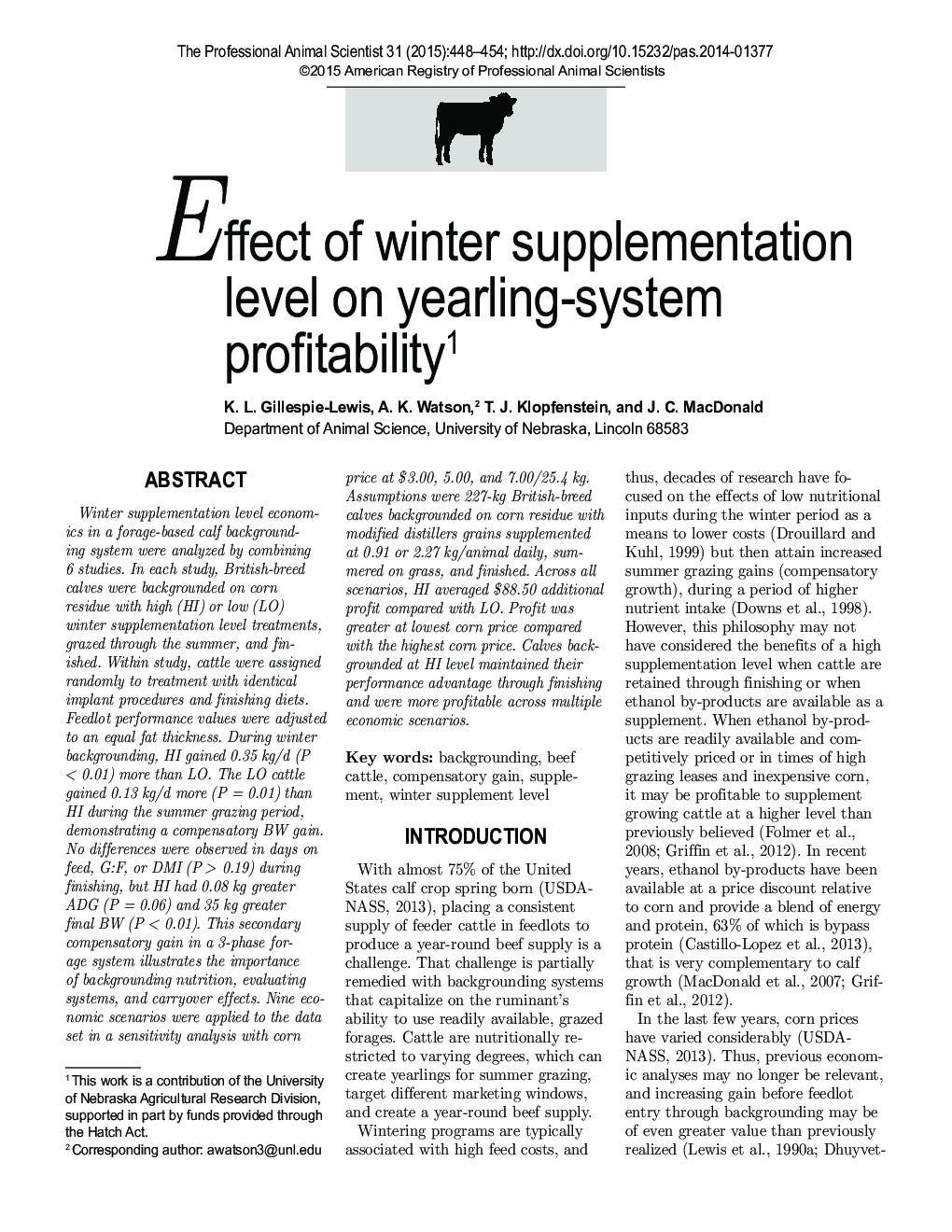| Article ID | Journal | Published Year | Pages | File Type |
|---|---|---|---|---|
| 10161779 | The Professional Animal Scientist | 2015 | 7 Pages |
Abstract
Winter supplementation level economics in a forage-based calf backgrounding system were analyzed by combining 6 studies. In each study, British-breed calves were backgrounded on corn residue with high (HI) or low (LO) winter supplementation level treatments, grazed through the summer, and finished. Within study, cattle were assigned randomly to treatment with identical implant procedures and finishing diets. Feedlot performance values were adjusted to an equal fat thickness. During winter backgrounding, HI gained 0.35Â kg/d (PÂ <Â 0.01) more than LO. The LO cattle gained 0.13Â kg/d more (PÂ =Â 0.01) than HI during the summer grazing period, demonstrating a compensatory BW gain. No differences were observed in days on feed, G:F, or DMI (PÂ >Â 0.19) during finishing, but HI had 0.08Â kg greater ADG (PÂ =Â 0.06) and 35Â kg greater final BW (PÂ <Â 0.01). This secondary compensatory gain in a 3-phase forage system illustrates the importance of backgrounding nutrition, evaluating systems, and carryover effects. Nine economic scenarios were applied to the data set in a sensitivity analysis with corn price at $3.00, 5.00, and 7.00/25.4Â kg. Assumptions were 227-kg British-breed calves backgrounded on corn residue with modified distillers grains supplemented at 0.91 or 2.27Â kg/animal daily, summered on grass, and finished. Across all scenarios, HI averaged $88.50 additional profit compared with LO. Profit was greater at lowest corn price compared with the highest corn price. Calves backgrounded at HI level maintained their performance advantage through finishing and were more profitable across multiple economic scenarios.
Related Topics
Life Sciences
Agricultural and Biological Sciences
Animal Science and Zoology
Authors
K.L. Gillespie-Lewis, A.K. Watson, T.J. Klopfenstein, J.C. MacDonald,
